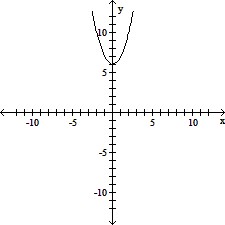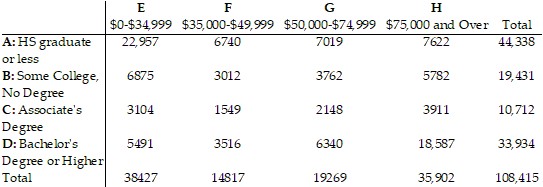Solve the rational inequality. Write the solution set using interval notation; then graph the solution set on a number line. ? 0
? 0
A. [3, 4)![]()
B. (-?, -7] ? [3, 4)![]()
C. [-7, 3] ? (4, ?)![]()
D. (-?, -7) ? (3, 4)![]()
Answer: B
You might also like to view...
Use the given graph of f(x) = ax2 + bx + c to solve the specified inequality.f(x) < 0
A. x < 6 B. no solution C. x < 0 D. all real numbers
Solve the problem.The number of centimeters, d, that a spring is compressed from its natural, uncompressed position is given by the formula d =  , where W is the number of joules of work done to move the spring and k is the spring constant. Solve this equation for W. Use the result to determine the work needed to move a spring 2 centimeters if it has a spring constant of 0.4.
, where W is the number of joules of work done to move the spring and k is the spring constant. Solve this equation for W. Use the result to determine the work needed to move a spring 2 centimeters if it has a spring constant of 0.4.
A. W = 2d2k; 3.2 joules
B. W =  ; 0.2 joules
; 0.2 joules
C. W =  ; 20 joules
; 20 joules
D. W =  ; 0.8 joules
; 0.8 joules
Solve the absolute value inequality. Write the solution set using interval notation. > 3
> 3
A. (-3, ?) B. (-3, 3) C. (-?, -3) ? (3, ?) D. (3, ?)
Solve the problem.The given contingency table gives the number (in thousands) of U.S. households classified by educational attainment (high school graduate or less denoted with A, some college with no degree denoted B, an associate's degree denoted with C, and a bachelor's degree or higher denoted with D) and household income ($0 - $34,999 denoted with E, $35,000-$49,999 denoted with F, $50,000-$74,999 denoted G, and $75,000 and over denoted H). Find the number of households in the given set.(C ? D) ? H
Find the number of households in the given set.(C ? D) ? H
A. 22148 B. 44,646 C. 22,498 D. 35,902